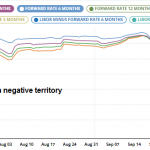Cepheid (NASDAQ: CPHD) announced it has received clearance from the U.S. FDA to market its Xpert® Flu/RSV XC, an on-demand molecular test for accurate and reliable determination of Flu A, Flu B, and differentiation of RSV infection. Xpert Flu/RSV XC runs on Cepheid’s GeneXpert® System, the world’s leading molecular diagnostic platform with more than 7,500 systems installed worldwide.
Upper respiratory infections are one of the most common reasons for doctor and hospital visits and, in the United States, are the most common illness leading to school or work absences. Early symptoms for a wide variety of viral and bacterial respiratory infections are similar, yet treatment is different depending on the cause of infection. With Xpert Flu/RSV XC, hospitals and clinicians can be prepared to reliably diagnose and differentiate influenza strains and RSV in real-time.
“Influenza strains are notoriously unpredictable and the severity of flu outbreaks can vary widely from season to season,” said John Bishop, Cepheid’s Chairman and Chief Executive Officer. “Recent media coverage of serious viruses such as Enterovirus D68 and Ebola have raised public awareness, and created a greater need for healthcare workers to deliver timely and accurate test results for flu or RSV infection.”
The flu is a contagious respiratory illness caused by influenza viruses that infect the nose, throat, and lungs. It can cause mild to severe illness, and at times can lead to death. Patients infected with the flu may be able to infect others beginning one day before symptoms develop and up to five to seven days after becoming sick. Some people, especially young children and people with weakened immune systems, might be able to infect others for a longer time.1
Respiratory syncytial virus (RSV) is a very common virus that leads to a wide range of respiratory symptoms in children and older adults. It can be more serious in young children, especially those in certain high-risk groups. Most infants have had an RSV infection by age two.2 RSV is the most common cause of bronchiolitis and pneumonia among infants and children under one year of age.3















Leave A Comment